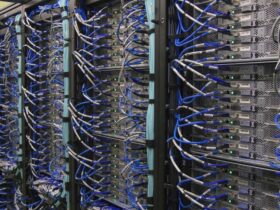In the rapidly advancing world of healthcare, diagnostic tools play a critical role in enhancing patient care. Among these tools, visual diagnostic imaging stands out as a cornerstone of modern medicine, helping healthcare professionals detect diseases and conditions early. One breakthrough innovation in this realm is Diag Image. Leveraging cutting-edge technology, Diag Image is transforming the way diagnoses are made, offering improved accuracy, efficiency, and collaboration. In this article, we explore how Diag Image is reshaping the medical imaging landscape, its advantages over traditional methods, real-life applications, and the future of diagnostic imaging.
The Importance of Visual Diagnostic Imaging
Visual diagnostic imaging has become an indispensable part of modern healthcare. It provides healthcare professionals with high-quality images that are essential for diagnosing, monitoring, and treating various medical conditions. Without visual diagnostic imaging, many conditions could remain undetected or misdiagnosed.
Early Detection and Better Outcomes
Early detection is often the key to better treatment outcomes. With technologies like Diag Image, doctors can identify abnormalities in their patients’ bodies with greater clarity and precision, enabling timely interventions. Whether it’s detecting a small tumor or diagnosing a bone fracture, high-quality imaging can make all the difference.
Communication and Collaboration
Beyond individual diagnoses, visual diagnostic imaging fosters collaboration between specialists. Medical images provide a universal language for healthcare professionals, making it easier for them to discuss complex cases. This helps ensure that all medical teams, from surgeons to radiologists, are aligned in their treatment approach.
Advancing Medical Research
The importance of visual diagnostic imaging extends to medical research. By providing detailed images of diseases and conditions, it enables scientists to gain a deeper understanding of various ailments. This research drives innovations in medical treatments and improves healthcare delivery systems.
Types of Visual Diagnostic Imaging Techniques
Visual diagnostic imaging covers a wide range of techniques, each suited to different diagnostic needs. These technologies are used in various specialties, including oncology, orthopedics, neurology, and more. Here are some of the most commonly used diagnostic imaging techniques:
X-rays
X-rays are perhaps the most familiar type of diagnostic imaging. They are particularly useful for identifying fractures, infections, and certain diseases. X-rays produce quick results, which makes them invaluable in emergency situations.
Ultrasound
Ultrasound imaging uses sound waves to create images of the inside of the body. It is commonly used in obstetrics to monitor pregnancies and is also useful for examining soft tissues like muscles and organs. Ultrasound is non-invasive and does not use harmful radiation, making it a preferred choice in certain applications.
MRI (Magnetic Resonance Imaging)
MRI uses powerful magnetic fields to generate detailed images of the body’s internal structures, such as the brain, spinal cord, and organs. MRI is especially useful in diagnosing neurological and musculoskeletal conditions. Its high resolution allows for detailed visualization of soft tissues.
CT Scans (Computed Tomography)
CT scans combine multiple X-ray images to create cross-sectional views of the body. These scans provide a clearer image of complex areas and are often used to detect cancers, heart conditions, and internal injuries.
PET Scans (Positron Emission Tomography)
PET scans are commonly used in oncology to detect cancer. These scans highlight metabolic activity in the cells, helping doctors identify tumors that might not be visible with other imaging methods.
Advantages of Diag Image over Traditional Methods
While traditional diagnostic imaging methods have served us well, Diag Image brings several innovations that make it a game-changer for the healthcare industry.
Exceptional Imaging Clarity
Diag Image technology offers high-resolution imaging that captures minute details, providing healthcare professionals with more accurate insights. The clearer the image, the more likely it is that conditions will be detected early, leading to better outcomes.
Speed and Efficiency
Diag Image technology significantly reduces the time needed for generating results. Unlike traditional imaging methods that may involve waiting for film development or lengthy processing times, Diag Image can provide results much faster, enabling quicker decision-making for medical teams.
Enhanced Collaboration
One of the key advantages of Diag Image is its ability to enable real-time sharing of images between healthcare professionals. Specialists from different locations can access the same images simultaneously, ensuring that collaboration is faster and more efficient.
Minimizing Human Error
Human error in the interpretation of medical images can have serious consequences. With Diag Image, the advanced software used to analyze images reduces the risk of errors by automating parts of the process. This ensures more accurate diagnoses and fewer misdiagnoses.
Non-Invasive and Comfortable
Many traditional imaging techniques require invasive procedures or exposure to radiation. Diag Image, in many cases, offers a non-invasive approach that minimizes patient discomfort and eliminates the risks associated with radiation exposure.
Real-Life Applications of Diag Image
Diag Image technology is being used across various medical specialties to enhance the diagnosis and treatment of patients. Below are some real-life applications of this innovative imaging technique:
Oncology
In oncology, early detection is critical for successful treatment outcomes. Diag Image allows oncologists to detect tumors at their earliest stages, leading to more effective treatments. Radiologists use Diag Image to assess the size, location, and type of tumor, which helps guide treatment plans.
Orthopedics
Orthopedic surgeons rely on precise imaging to diagnose fractures, joint conditions, and other musculoskeletal issues. Diag Image provides clear images of bones and soft tissues, allowing for accurate assessments and treatment planning.
Neurology
In neurology, Diag Image is used to identify conditions affecting the brain and spinal cord. MRI and CT scans, enhanced by Diag Image technology, allow for detailed visualization of neurological structures, aiding in the diagnosis of conditions such as brain tumors, strokes, and degenerative diseases.
Veterinary Medicine
Diag Image technology is not limited to human healthcare. Veterinarians also use this imaging technology to diagnose conditions in animals. Whether it’s a pet with a broken bone or a large animal with internal health concerns, Diag Image enhances diagnostic accuracy and treatment planning.
Research and Development
In research settings, scientists are using Diag Image to study diseases at a cellular level. This has led to breakthroughs in understanding diseases like cancer, Alzheimer’s, and heart disease, driving innovations in treatment and prevention.
Incorporating Artificial Intelligence in Diag Image
The integration of Artificial Intelligence (AI) into Diag Image is transforming how images are analyzed and interpreted. AI-powered tools enhance the speed and accuracy of diagnostics, identifying patterns and anomalies that may not be immediately obvious to the human eye.
AI-Powered Insights
AI systems can analyze vast amounts of imaging data quickly, offering enhanced insights into patient conditions. These insights allow healthcare professionals to make informed decisions faster, leading to better patient care.
Reducing Human Error
AI reduces human error by providing an additional layer of analysis. The system learns from a wide range of imaging data, continually improving its diagnostic accuracy. As AI systems evolve, they become better at identifying subtle details that may otherwise go unnoticed.
Streamlining Healthcare Workflows
By integrating AI with Diag Image, healthcare professionals can streamline their workflows. AI-driven tools can automatically highlight areas of concern in an image, allowing radiologists and other specialists to focus their attention on the most critical aspects of the scan.
Challenges and Future Developments in the Field
While Diag Image technology has already made significant strides, there are still challenges to overcome. These include:
Integration into Existing Healthcare Systems
The integration of new diagnostic technologies into existing healthcare infrastructures can be difficult. Budget constraints, outdated equipment, and training requirements can all hinder the widespread adoption of Diag Image technology.
Data Privacy and Security
As medical imaging becomes more advanced, the amount of sensitive data being generated increases. Ensuring the privacy and security of this data is crucial, requiring ongoing investment in cybersecurity measures.
Future Developments
The future of Diag Image looks promising, with continued advancements in AI, machine learning, and imaging technologies. Future developments may include the use of 3D printing, augmented reality, and even more advanced AI algorithms that improve diagnostic accuracy and treatment planning.
Conclusion
Diag Image is at the forefront of a revolution in medical imaging, offering healthcare professionals tools to diagnose and treat conditions with unprecedented accuracy and speed. As the technology continues to evolve, it promises to reshape healthcare delivery, enhancing patient outcomes and streamlining diagnostic processes.
The combination of high-resolution imaging, AI-powered analysis, and enhanced collaboration makes Diag Image an indispensable tool in modern healthcare. While challenges remain, the future of diagnostic imaging looks bright, with innovations poised to make medical diagnoses faster, more accurate, and more accessible to everyone.
Frequently Asked Questions
What is Diag Image?
Diag Image is a cutting-edge visual diagnostic imaging technology that provides high-resolution images to enhance diagnostic accuracy and efficiency in healthcare.
How does Diag Image improve patient care?
Diag Image improves patient care by offering clearer, faster, and more accurate images, which helps healthcare professionals diagnose conditions earlier and make better-informed decisions.
What are the benefits of Diag Image over traditional imaging methods?
Diag Image offers superior image clarity, faster results, enhanced collaboration between professionals, and reduced human error, making it a more effective tool for modern healthcare.
For More Updates Visit: Biomagazine








Leave a Reply